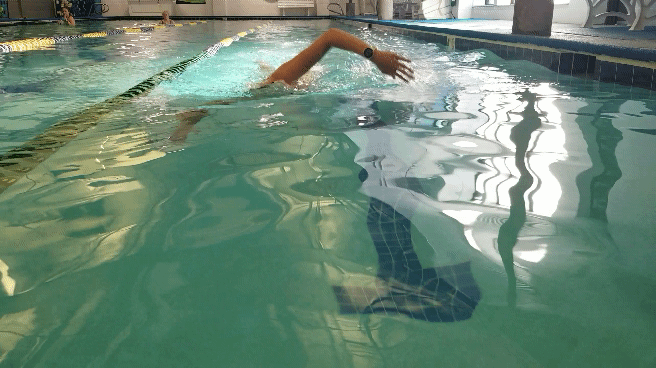Despite the broad shoulders, strong upper back muscles, and flipper-like feet of swimmers, swimming is a technique-heavy sport. You can be the strongest person on earth and not be able to move through the water. It isn't a sport where you can use force to progress (That isn't to say that strength training isn't useful for swimmers. It certainly is, given that it's specific for swimming and/or triathletes.)
Thanks to video-analysis and coaches spending hours on deck staring into the abyss...kidding, I mean looking at all of the strokes of different swimmers, we can break down technique of all four strokes into bite-size chunks and improve our overall efficiency in the water.
Out of the four strokes, freestyle (aka free) is the most common stroke and it will be the main focus in these first few Swimming Sundays posts.
Main Components of Freestyle
There are at least 7 different components of free. Some argue more or less, depending on how you define each aspect of the stroke. For our purposes, these are the 7 parts:
Kick
Entry
Catch
Pull/Power Phase
Finish
Recovery
Breathing
Each of these phases or parts have their own nuances and key mechanics that contribute to the entire stroke.

Body Positioning
An efficient swimmer is horizontal from head/fingertip to toe, their head, hips and feet are at or near the surface of the water, and they swim in a straight line. Their head is also pointed down, and the eyes looking slightly forward. This positioning has the least amount of drag and allows the swimmer to just cut through the water.
If this sounds confusing, think about standing with good posture to start with: head over the shoulders, chin up, shoulders back and aligned over your hips and feet, and if you have a very arched back add a tail tuck. By thinking of this good standing posture in the water and pressing your chest slightly into the water (not the shoulders), you utilize more of your lats (back muscles), and maintain that ideal horizontal and straight body position.
The cause of poor body positioning could be caused by a whole host of things (look at the amount of things that contribute to the stroke itself)! For example, sinking legs could be caused by poor head positioning, a dropped elbow in the catch, or a weak core, and that's just to name a few causes. As we go through the different aspects of the freestyle, we'll go through how the mechanics on that phase can affect the rest of the body and the stroke in the water.
If you can't wait to get started with improving your stroke, get your stroke recorded or observed by someone and see if your head, shoulders, hips, and feet are at the surface of the water. This will give you some perspective of what you're actually doing in the water versus what you perceive. Just like how you watch your form in the mirror when lifting weights or getting a bike fit.
One more thing to keep in mind: whenever you're changing anything about your stroke, know that it's going to take time and practice. At a minimum, it takes 6 weeks for you to implement one change to your stroke, due to the development of neuromuscular control. The more time you spend in the water, the more refinement you can get out of this development. Consistent practice is key to swim technique (and any improvement in sport or life for that matter).
Next time, we'll start with the back end of the stroke, the kick, and how having an efficient kick is crucial for any type of swimmer (yes, this includes triathletes, too).
Until next time, happy swimming!
--Anna

If you're looking for more swimming resources and information, check out these sites, blogs and video channels!